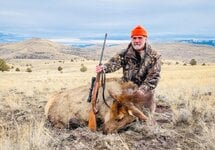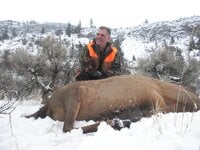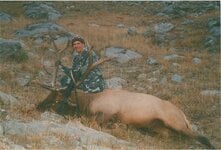Greetings! I'm new to the forum and I'd like to start by expressing my appreciation for what I've already learned from forum members and my respect for the civil and insightful dialogue I've observed. I'm hoping to learn a bit more about elk camp etiquette as I've booked a (first-time) guided elk hunt here in Wyoming this fall and I'd appreciate any insights the members here might care to share about the various "dos and don'ts."
For example, one issue that occurs to me is the matter of how far guides might typically expect clients to take shots at elk. I read so much about "long distance hunting" and, candidly, I'd probably choose to pass on any shot over, say, 300 yards because that would be beyond my comfort zone for a high likelihood kill. (FWIW, I'll be hunting in fairly open country and using either a 7 RM or a 300 WSM.) Would this make me a bad client in the eyes of the guide? Another example might be me possibly choosing to pass on a shot at a bull elk because of its size, and in hopes of coming across a larger specimen later in the hunt. Would this be regarded as a "reasonable" decision on my part if my guide knows that I'm fully aware that a larger bull may never appear. Another way of phrasing this might be, how important is it to guides to have high client success rates? Of course, there's also the matter of how much to tip, and who to tip.
In general, it's important to me to be a "good client," so if you have any advice about this matter, I'd value your insights. Also, if you care to share any anecdotes you may have about particularly gracious or egregious client behavior, I might learn from that, too. Thanks in advance.
Kind regards,
Cowboy307
For example, one issue that occurs to me is the matter of how far guides might typically expect clients to take shots at elk. I read so much about "long distance hunting" and, candidly, I'd probably choose to pass on any shot over, say, 300 yards because that would be beyond my comfort zone for a high likelihood kill. (FWIW, I'll be hunting in fairly open country and using either a 7 RM or a 300 WSM.) Would this make me a bad client in the eyes of the guide? Another example might be me possibly choosing to pass on a shot at a bull elk because of its size, and in hopes of coming across a larger specimen later in the hunt. Would this be regarded as a "reasonable" decision on my part if my guide knows that I'm fully aware that a larger bull may never appear. Another way of phrasing this might be, how important is it to guides to have high client success rates? Of course, there's also the matter of how much to tip, and who to tip.
In general, it's important to me to be a "good client," so if you have any advice about this matter, I'd value your insights. Also, if you care to share any anecdotes you may have about particularly gracious or egregious client behavior, I might learn from that, too. Thanks in advance.
Kind regards,
Cowboy307







